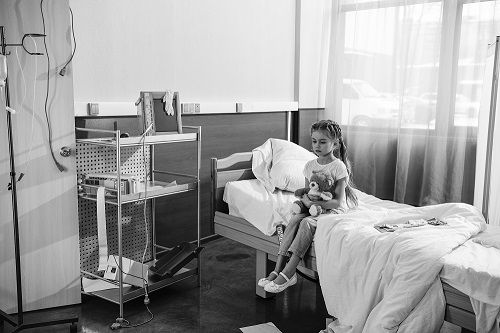MIS-C was Less Severe During Omicron Wave of COVID-19 Pandemic
New research in Israel offers hope that multisystem inflammatory syndrome in children—a serious complication of COVID-19—declined during the Omicron surge of the pandemic.

The severity and incidence of multisystem inflammatory syndrome in children (MIS-C) declined during the Omicron wave of the COVID-19 pandemic, new research in Israel suggests.
The multicenter prospective study, detailed in a recent research letter in JAMA, included 171 children with a median age of 8 who were diagnosed with MIS-C at 12 hospitals in Israel during surges of three different SARS-CoV-2 variants – Alpha, Delta and Omicron.
“This study suggests that MIS-C during the Omicron wave was less severe than during the Alpha or Delta waves of the COVID-19 pandemic,” the study authors, led by Niai Levy, MD, of Rambam Health Care Campus in Haifa, wrote. “Possible explanations include the Omicron variant itself, previous infection with SARS-CoV-2, vaccination against SARS-CoV-2, and improvement in treatment over time. In addition, the incidence rate of MIS-C during the Omicron wave was lower than during the Delta and Alpha waves.”
Children in the study included 59 diagnosed with MIS-C during the Alpha wave from Dec. 20, 2020, to April 10, 2021; 79 diagnosed during the Delta wave from July 18 to Nov. 13; and 33 diagnosed during the Omicron wave from Nov. 21 to March 12.
The patients all were treated with intravenous immunoglobulins and steroids, and second doses of COVID-19 vaccines were administered at least two weeks before hospitalization in 6.3% of children diagnosed during the Delta wave and 15.1% during the Omicron wave.
Outcomes improved during the Omicron wave, with fewer ICU admissions among those in the Omicron group (21.2%) compared with the Delta (49.4%) and Alpha (57.6%) waves. Use of vasopressors also declined to 6% of Omicron patients, down from 17.7% during Delta and 22% during Alpha. Mechanical ventilation, which was not used during the Omicron wave, was used in 8.9% of patients during the Delta surge and 8.5% during the Alpha surge. The median length of hospital stays also was two days shorter during the Omicron wave.
The study noted that incidences of MIS-C also declined, occuring in 54.5 per 100 000 persons younger than 18 years during the Alpha wave, 49.2 during Delta and 3.8 during Omicron.
The study was consistent with results of a South African study that found no cases of MIS-C in during the Omicron wave. Limitations include small cohort size, data from only one country and exclusion of cases that emerged after the 16-week study period.
MIS-C has been a concern for public health officials during the pandemic, bringing potentially devastating outcomes to children infected with SARS-CoV-2. A recent study showed that MIS-C took a greater toll on children than influenza or RSV, leading to more severe illness, longer hospital stays and higher health care costs.
The effects of MIS-C can linger for months. A recent study in the United Kingdom found that in a six-month review, common long-term sequelae included muscular fatigue; neurological sequelae such as proximal myopathy, dysmetria, and abnormal saccades; and anxiety and emotional lability.
The condition has been shown to be more common among Black, Hispanic and Asian children.
